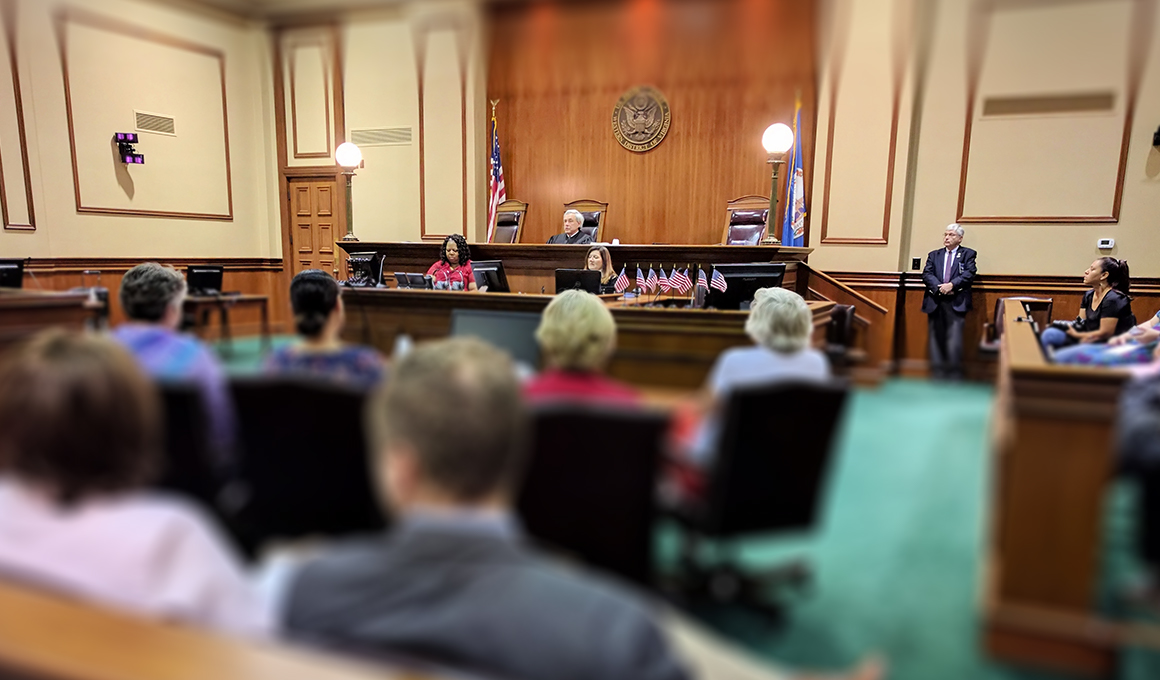Mastering Trial Presentation: Tips for Engaging and Persuasive Court Methods
In the realm of trial discussion, the capacity to engage and convince is vital. A successful courtroom approach rests on comprehending the audience, crafting an engaging story, and employing effective aesthetic aids. Moreover, the subtleties of body language and the importance of technique can not be neglected. Each of these components plays a critical function in forming the jurors' perceptions and choices. Nevertheless, the obstacle hinges on perfectly integrating them right into a cohesive presentation. What techniques can truly elevate a test discussion from average to phenomenal?
Recognizing Your Audience
To efficiently grasp test discussion, it is critical to comprehend your target market. Understanding their demographics, backgrounds, and possible prejudices can aid customize your discussion to reverberate with them effectively.

A recognition of the judge's choices and courtroom etiquette is equally vital, as it can influence the circulation of your presentation. Judges may focus on brevity and clearness, so providing your case in a straightforward manner can boost your trustworthiness. Furthermore, recognizing the opposing counsel's techniques can aid in preparing counterarguments that effectively address their points.
Inevitably, comprehending your audience permits you to involve them better, cultivating connection and persuasion throughout the trial (trial presentation). By leveraging understandings regarding their inspirations and assumptions, you can create an engaging presentation that reverberates and inevitably affects the result of the instance. This foundational knowledge is crucial for any type of attorney intending to achieve success in the court
Crafting a Compelling Narrative
A well-crafted narrative works as the foundation of a reliable test presentation, leading the audience via the intricacies of the case. This story should be structured to involve jurors emotionally and intellectually, making the realities relatable and reasonable. By weaving with each other the elements of the situation-- such as the timeline, essential occasions, and pivotal testaments-- attorneys can produce a systematic storyline that reverberates with jurors.
To attain this, it is important to recognize the central themes that will certainly drive the story. Attorneys need to concentrate on the motivations and goals of the events entailed, highlighting the human aspects of the instance (trial presentation). This approach not just keeps juror interest however also promotes compassion, leading them to connect personally with the narrative
Additionally, making use of clear and succinct language is vital. Avoiding legal jargon enables the target market to realize the important points without confusion. Each section of the narrative ought to build toward an engaging climax, culminating in a convincing final thought that strengthens the situation's core message. Ultimately, a strong story not just clarifies the concerns handy however additionally creates a long lasting impact that can affect the outcome of the trial.
Utilizing Aesthetic Aids Properly
How can aesthetic aids improve the performance of a test presentation? Aesthetic aids act as powerful tools that can dramatically boost juror understanding and retention of complex information - trial presentation. When employed thoughtfully, they can clear up key factors, illustrate relationships, and stress essential evidence that sustains the case narrative
Reliable visual help consist of graphes, charts, timelines, and pictures, which can simplify elaborate information and provide context. As an example, a timeline can succinctly look at this website share the series of events, while a graph can highlight analytical information in a visually appealing way. The tactical use multimedia presentations can also enhance involvement and keep juror rate of interest throughout the trial.
Moreover, visual help can aid to evoke psychological responses, enhancing the human elements of an instance. By providing photos or videos pertinent to the situation, lawyers can produce a more compelling and relatable narrative. Nevertheless, it is necessary to make certain that visual help are skillfully made and not overly intricate, as this can lead to confusion instead of quality.
Engaging Body Movement Strategies
Aesthetic aids are not the only tools that can improve the performance of a test presentation; engaging body language methods additionally play a crucial duty in recording juror focus and sharing self-confidence. A presenter's nonverbal cues can substantially influence jurors' perceptions and responses, making it necessary to master these strategies.

Additionally, differing your singing tone and rate can boost your storytelling, making it much more compelling. Stopping briefly tactically permits jurors to soak up essential details and indicates the value of what you are stating. Lastly, moving purposefully within the courtroom can assist reinforce your points, offered it does not distract from your message.
Integrating these body language techniques will not only enhance your court room visibility however also promote a more persuasive link with jurors, inevitably contributing to the success of your trial presentation.
Exercising for Influence
Reliable trial presentations pivot not only on the material but also on the delivery, making practice necessary for effect. The significance of wedding rehearsal can not be overemphasized; it enables attorneys to refine their click over here now debates and establish a powerful presence in the court room. Taking part in purposeful practice aids attorneys to identify their strengths and weak points, allowing them to readjust their pacing, tone, and body language as necessary.
To practice for effect, imitate trial conditions as very closely as feasible. This consists of making use of aesthetic help, exercising in front of coworkers, and soliciting useful feedback.

Conclusion
Understanding test discussion entails a complex technique that incorporates target market understanding, narrative advancement, visual aids, and body language. Rigorous practice in simulated setups better strengthens these approaches, making sure that each discussion resonates and leaves a long lasting impression on the jury.
 Kel Mitchell Then & Now!
Kel Mitchell Then & Now! Ralph Macchio Then & Now!
Ralph Macchio Then & Now! Suri Cruise Then & Now!
Suri Cruise Then & Now! Lucy Lawless Then & Now!
Lucy Lawless Then & Now! Tina Louise Then & Now!
Tina Louise Then & Now!